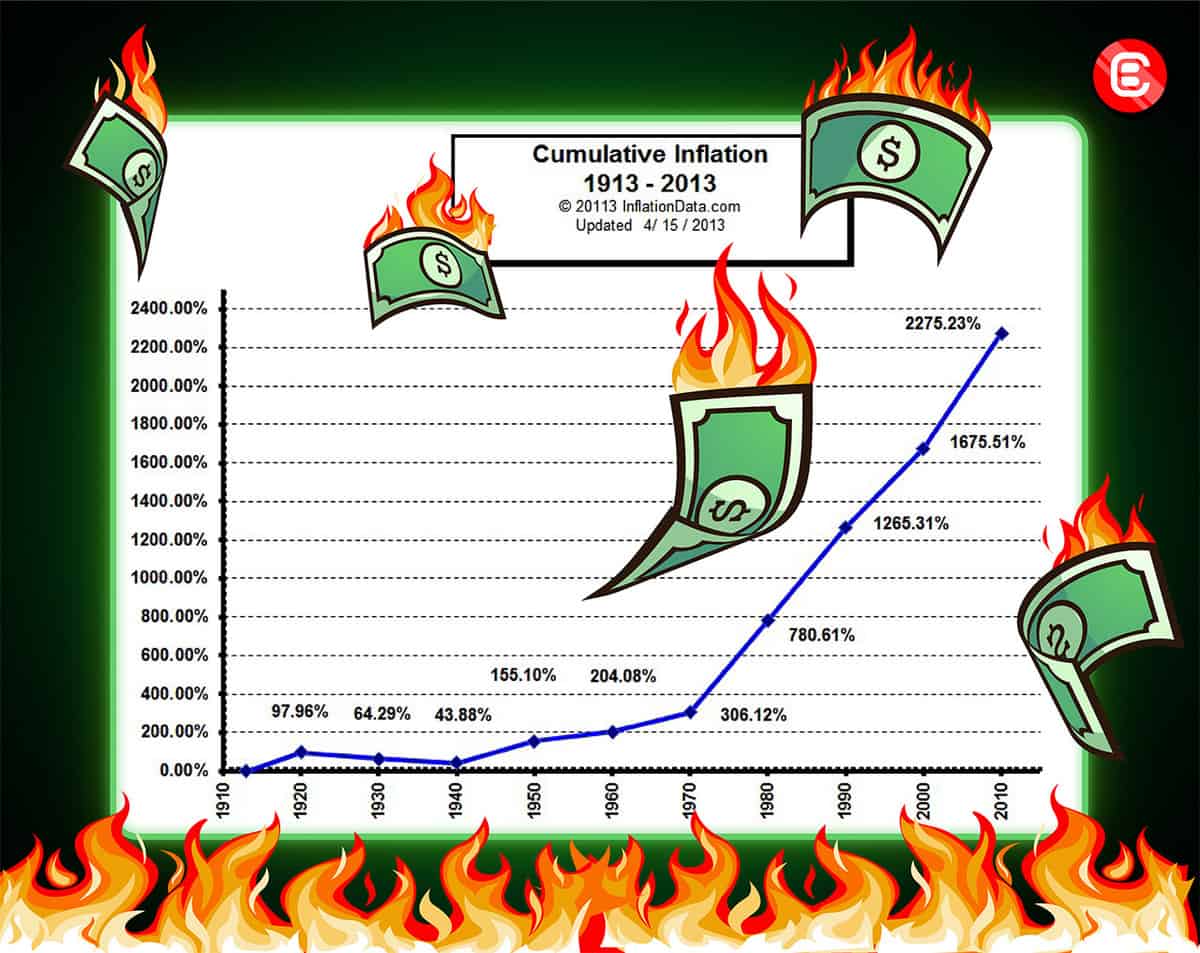Westie is a valued Crypto Banter community DEGEN, investor and researcher who focuses on DeFi and Layer 1s, but more importantly a Terra ecosystem OG!
Today, we reprint his excellent explanation of how you can use LUNA as an inflation hedge, just for you. If you haven’t yet, we HIGHLY encourage you to subscribe to this Medium Blog RIGHT NOW! His content is world-class and has many degens understanding how to best invest in the Crypto space!!
Inflation has been one of the hottest topics in the financial and cryptocurrency spaces this past year. It is defined by a rise in consumer prices for a particular currency, often caused by governmental monetary policy. As inflation rises, the purchasing power of the individual declines. This is a problem for all currencies, as they all rely on centralized monetary policy, but given the reserve currency status of the U.S. dollar, it has received the most attention and scrutiny.
Since the United States backed out of the Bretton Woods agreement in 1971, opting in to a free-floating system as apposed to the gold standard, the Federal Reserve was able to print money without a backstop. This caused rapid acceleration of the dollar’s rate of inflation.
Here is the cumulative inflation for the U.S. dollar in the decade between 1913 and 2013:

https://inflationdata.com/Inflation/Inflation_Rate/Long_Term_Inflation.asp
This graph doesn’t even take into account the money printing we’ve seen in the last year, as over 40% of all U.S. dollars in existence have been printed since March of 2020. As a result of the loss in purchasing power through this mechanism, people are constantly looking for investments that will maintain their relative value over time in order to counteract the devaluing currency. These investments are what is known as an inflation hedge.
Successful inflation hedges
What makes something a successful inflation hedge? I would argue that the best inflation hedges are either scarce assets or assets that are systematically designed to benefit from money printing.
For example, real estate is seen as an inflation hedge. This is because of the relative scarcity of real estate on the market. But also as inflation rises, interest rates fall, leaving home buyers more willing to bring on mortgage debt and therefore willing to pay a higher price.
Equities are also seen as an inflation hedge due to the fact that, besides their relative scarcity, the government often issues new currency by buying long term securities, such as corporate equities or bonds in a process known as quantitative easing. Gold is also often cited as a popular inflation hedge as well because of its overall scarcity as a tangible asset.
However, because gold doesn’t directly feel the impact from inflation such as real estate or stocks, and has a relatively unknown total and growing supply, people have begun to replace gold with Bitcoin, given its scarcity is greater and more transparent. All of these assets either contain their value due to innate scarcity, or some process directly tied to inflationary monetary policy.
Now, imagine there were an asset whose scarcity is systematically designed to match to the amount of money being printed. This could be a pretty powerful inflation hedge wouldn’t it?
LUNA as an inflation hedge
Let’s take a look LUNA and it’s relationship with UST. In order for one new UST to be minted into existence, someone must burn a dollars worth of LUNA. Therefore, the supply of LUNA falls at the exact rate of new money entering the system.
In a recent article I presented the case for UST as the inevitable leader of the stablecoin market. If we were to assume that DeFi will start to completely replace or run in the back-end of traditional financial rails, and UST will be the dominant stablecoin in this ecosystem, we could say that a majority of dollars the circulating money supply will make its way into UST. If that is the case, we can assume LUNA’s supply will expand and detract roughly following the amount of money in the financial system as a whole. With inflation, the supply of money obviously increases, and therefore as a result LUNA becomes more scarce. In a similar vein to how investors flocked from gold to Bitcoin due to its more mathematically precise scarcity,
LUNA provides a very easy systematic design that investors can more accurately understand. And rather than relying on strictly scarcity, such as gold or Bitcoin, there is actually a direct mechanism in which new money entering the system improves its value.
So where does that take the LUNA price? When citing Bitcoin as a potential competitor to gold as an inflation hedge, analysts often compare the market cap of gold and extrapolate the degree to which improved scarcity and technological innovation can cause an increased valuation comparatively.
If we imagine LUNA will compete in a similar fashion, with gold’s current market cap of $10 trillion and LUNA’s maximum supply of 1 billion, LUNA’s price would be $10,000. However, we would expect that LUNA’s supply would be drastically less with immense UST adoption.
To the extent this burn will be is extremely tough to model, given the supply changes depending on what the price of LUNA was when specific UST was minted, but given the expectation of the TFL wallet to be burned and the expectation that UST will stay in the system long-term, the supply could easily be in the tens of millions, which could push the price of LUNA to $100,000 and beyond. I hope to write about this extremely bullish case in more detail in a future article, but it’s clear this narrative could have a huge effect on LUNA’s price.
This investment thesis certainly needs a lot to play out in order for it to be true. DeFi must suck up a majority of the liquidity in the current financial system, UST much emerge as a dominant stablecoin, and LUNA must be seen as a viable investment option.
There is also the impact of LUNA’s price at any particular point, as a more expensive price means less of the quantity of LUNA being burned. However, powerful narratives such as this one are often what can bring larger amounts of buying interest from investors and speculators in the space, especially during times of increased mainstream adoption and bull market price action. As we see more and more UST adoption, I believe this narrative will begin to take larger form within the investment community. Only time will tell, but either way, I wouldn’t bet against the moon.
References:
If you enjoyed the content, consider following my Twitter @WestieCapital or my Medium page https://westiecapital.medium.com/ and if you have any questions my DM’s are always open. Cheers.






